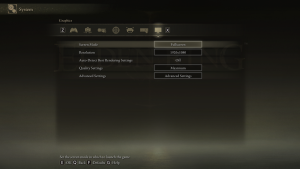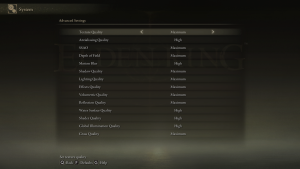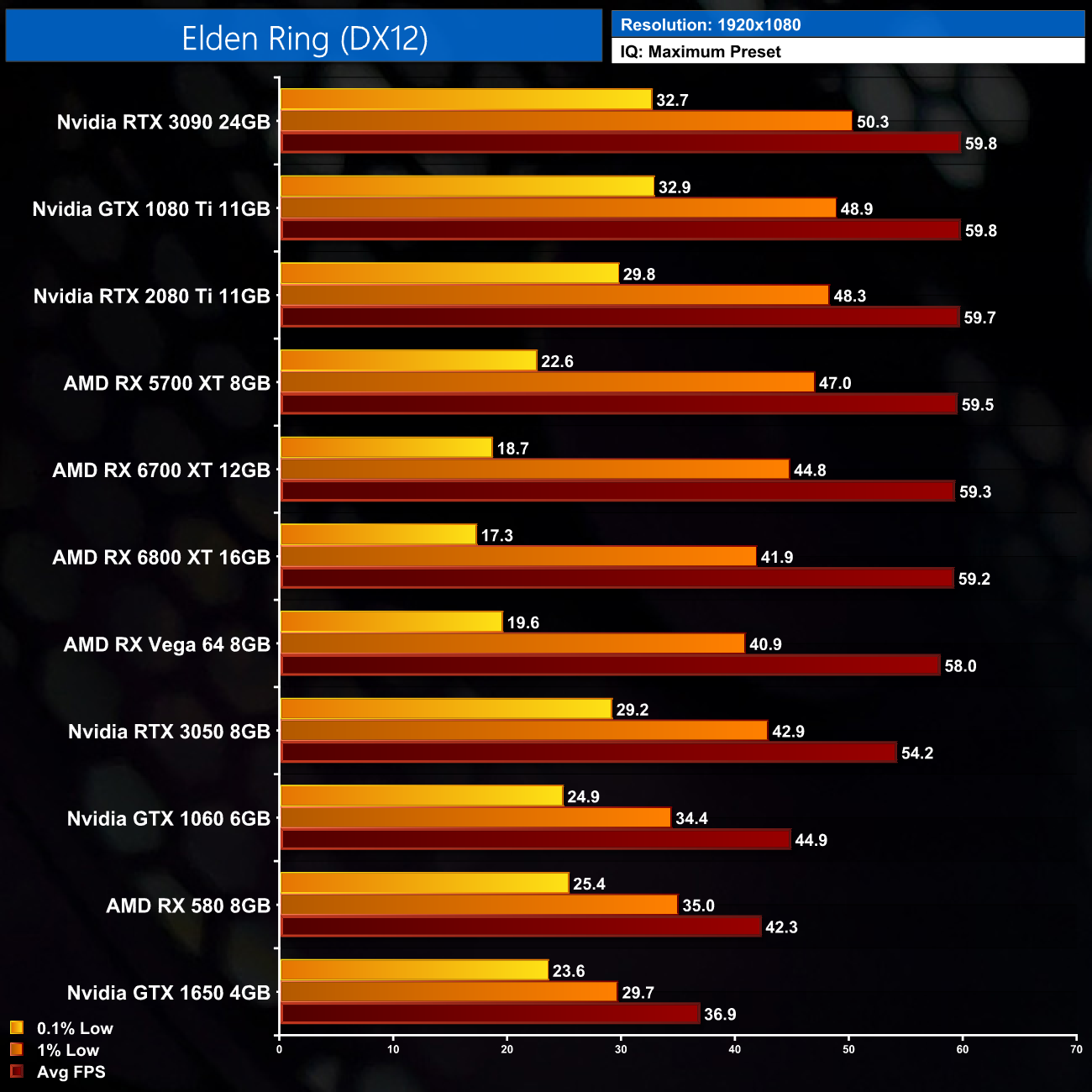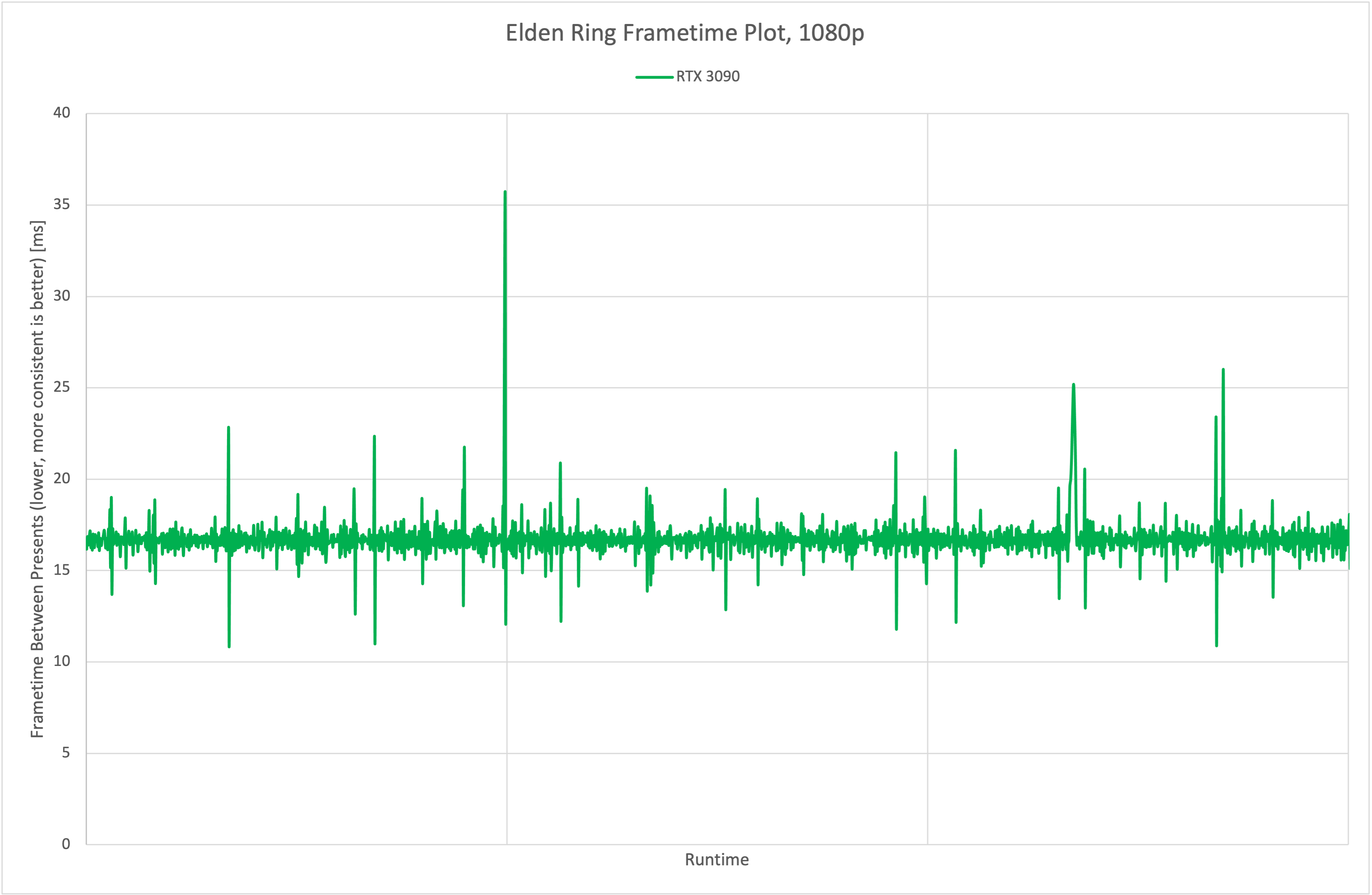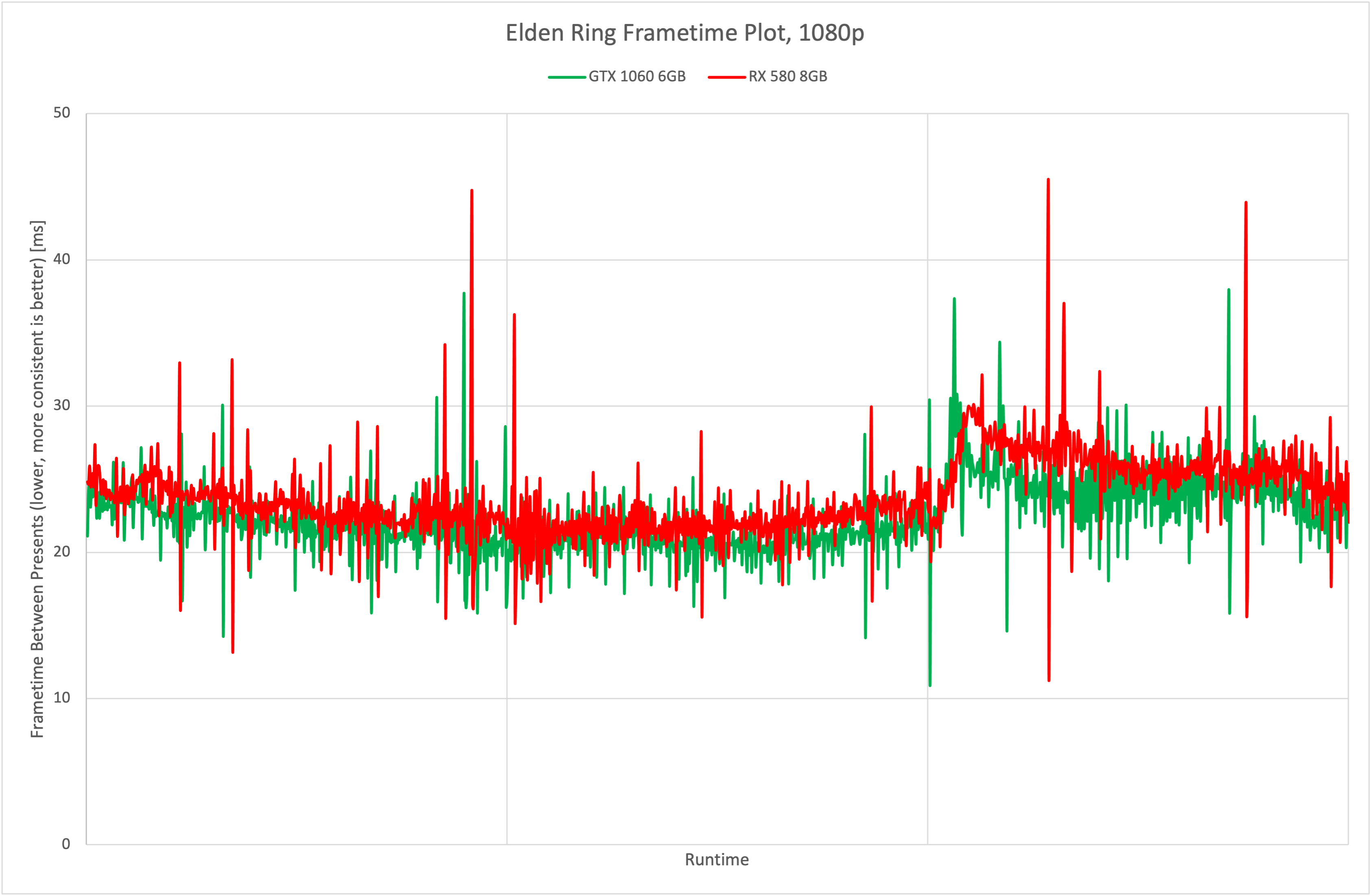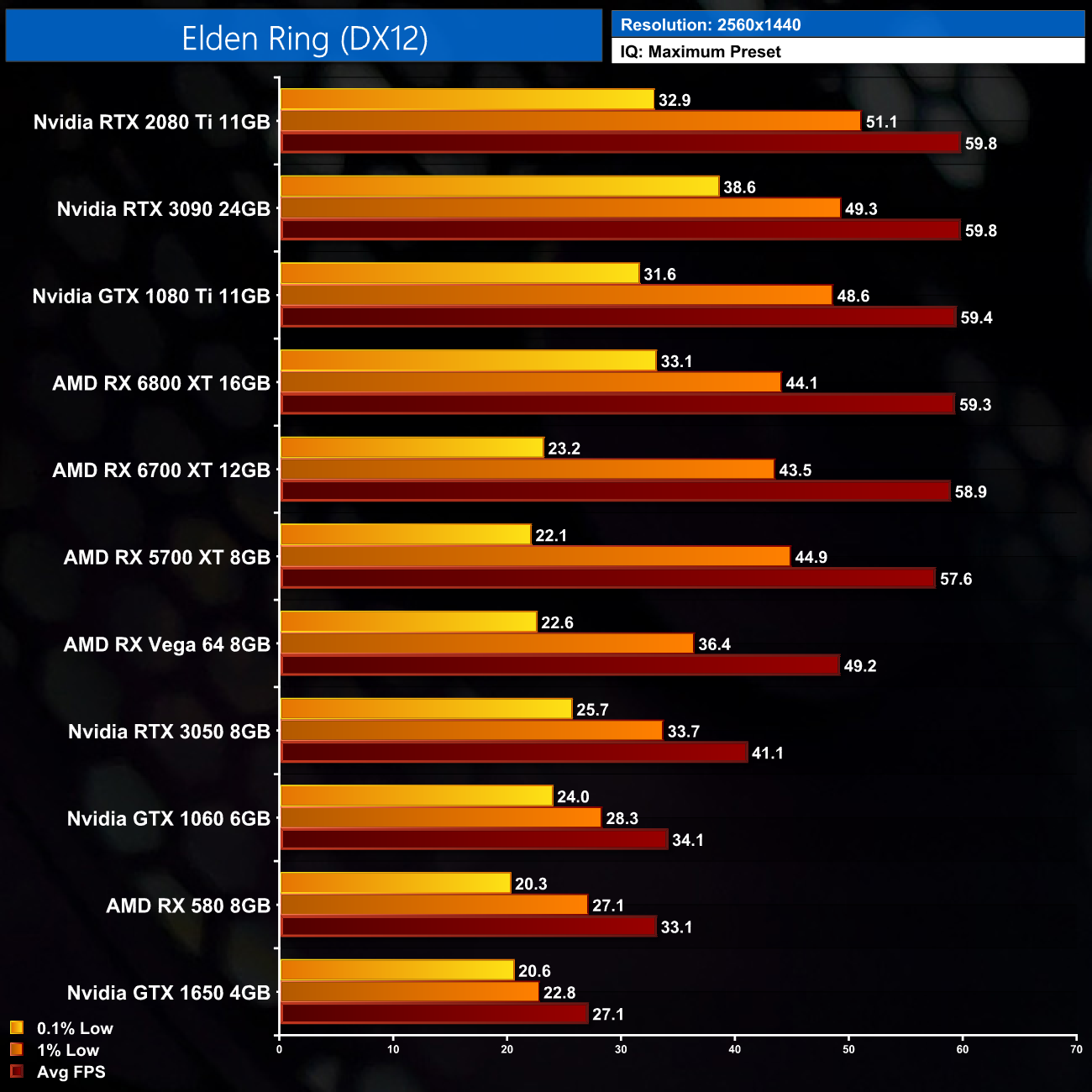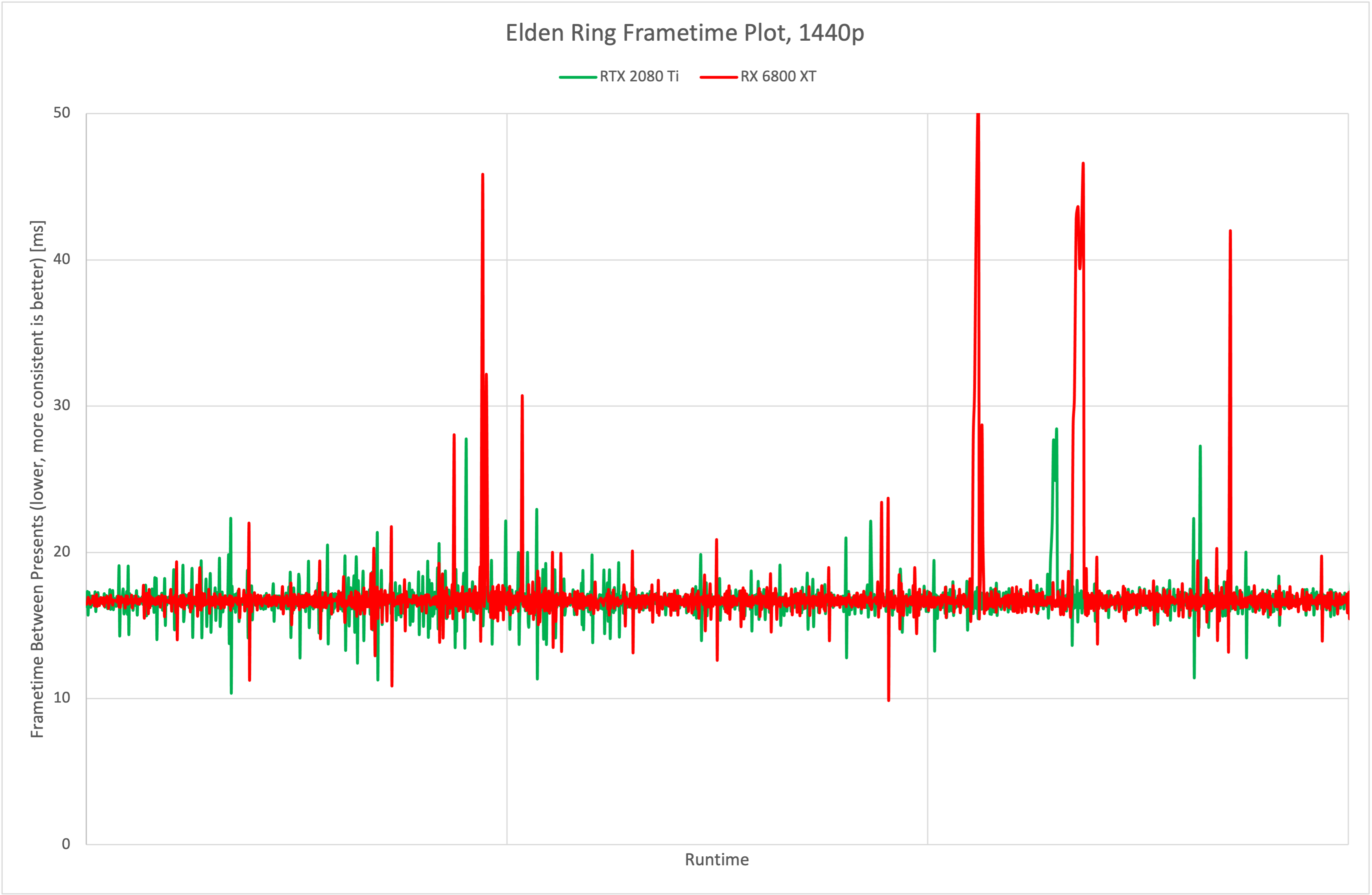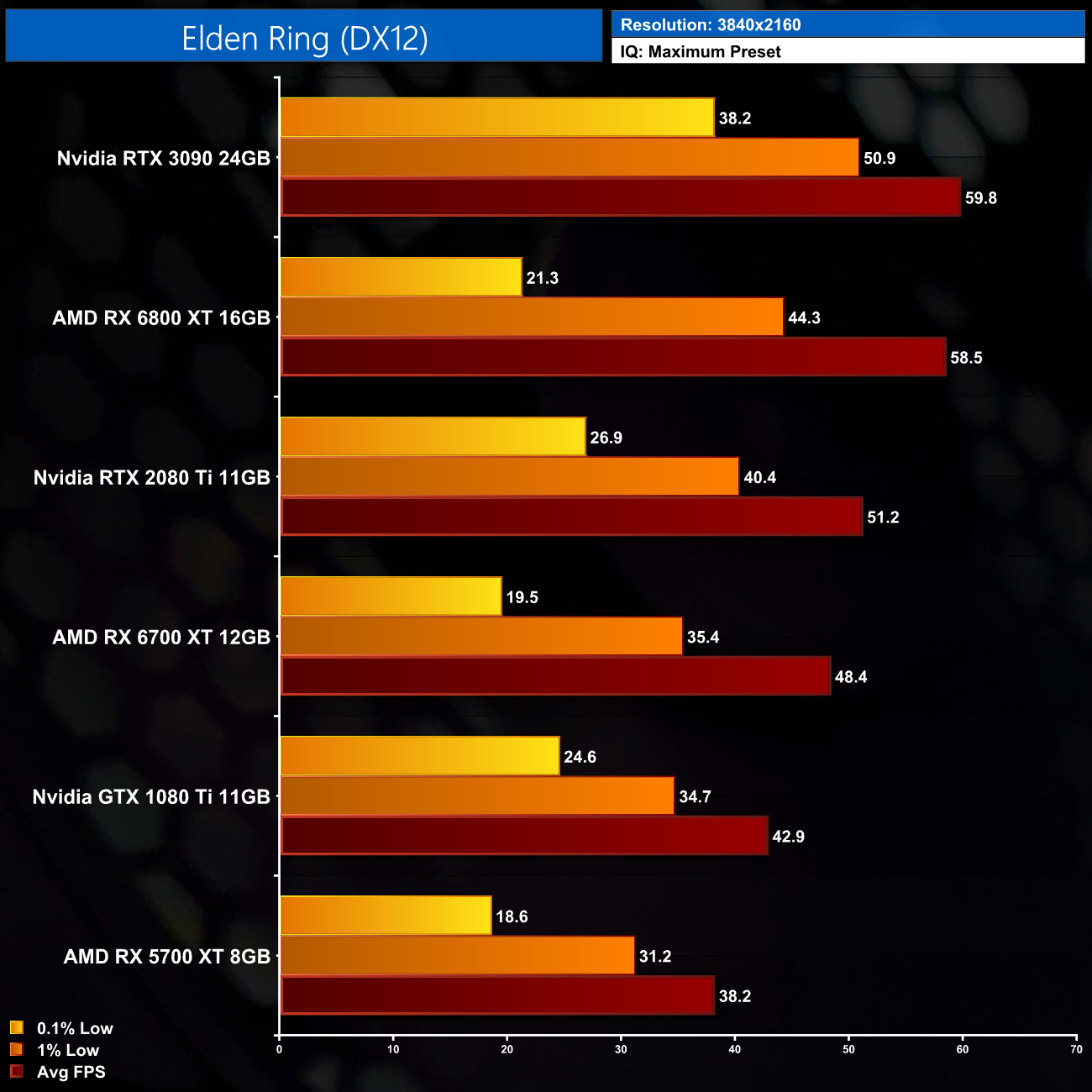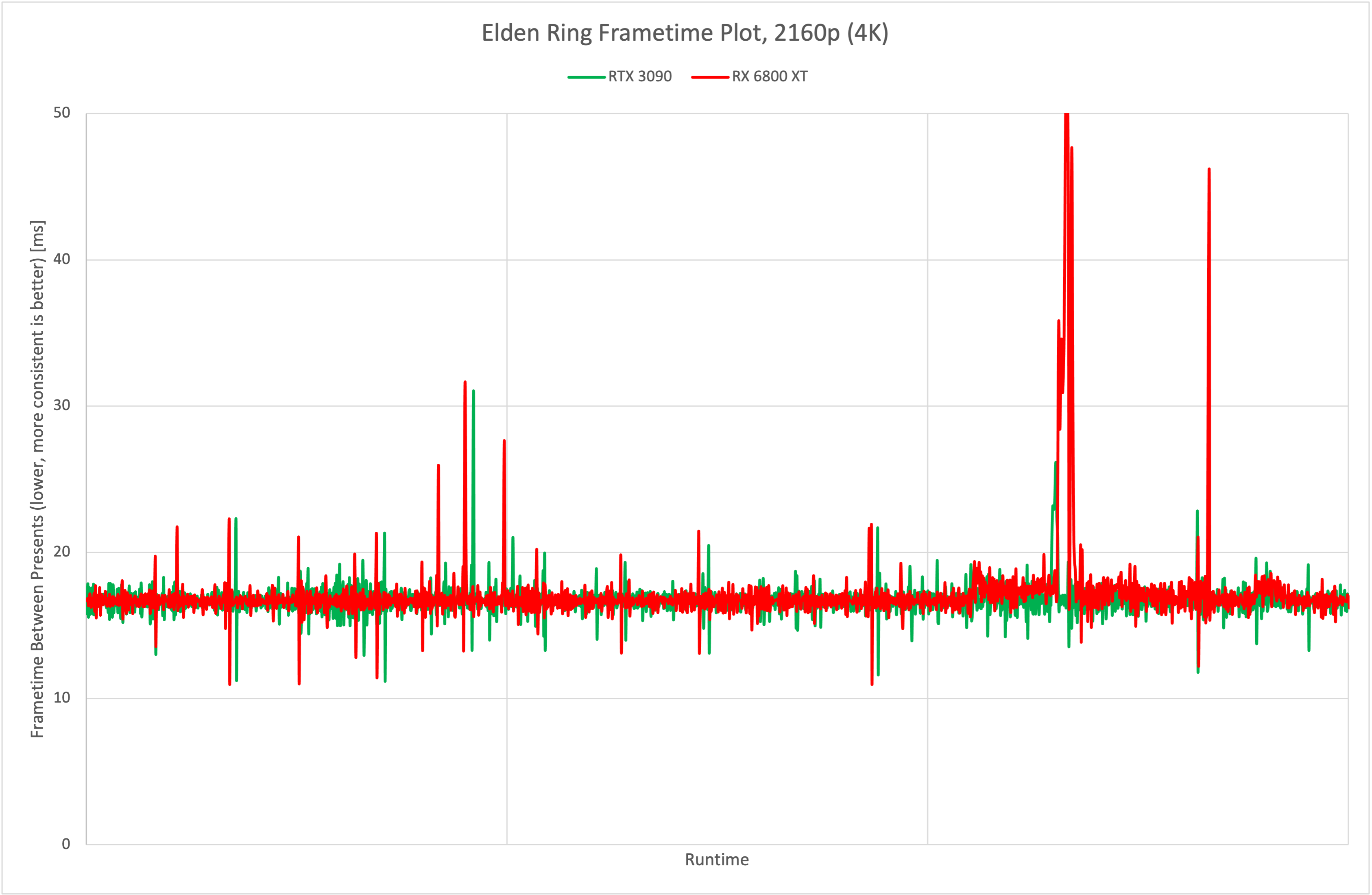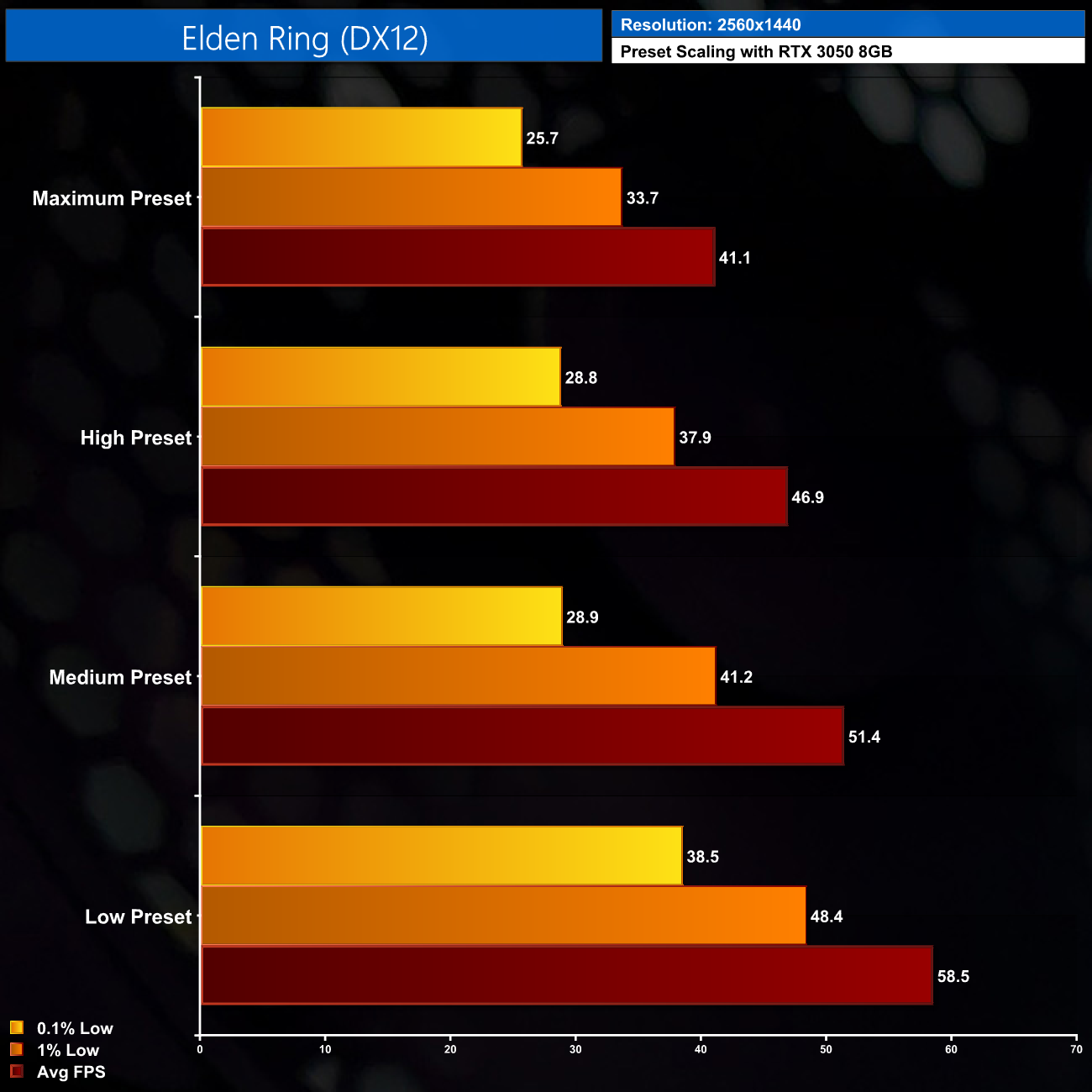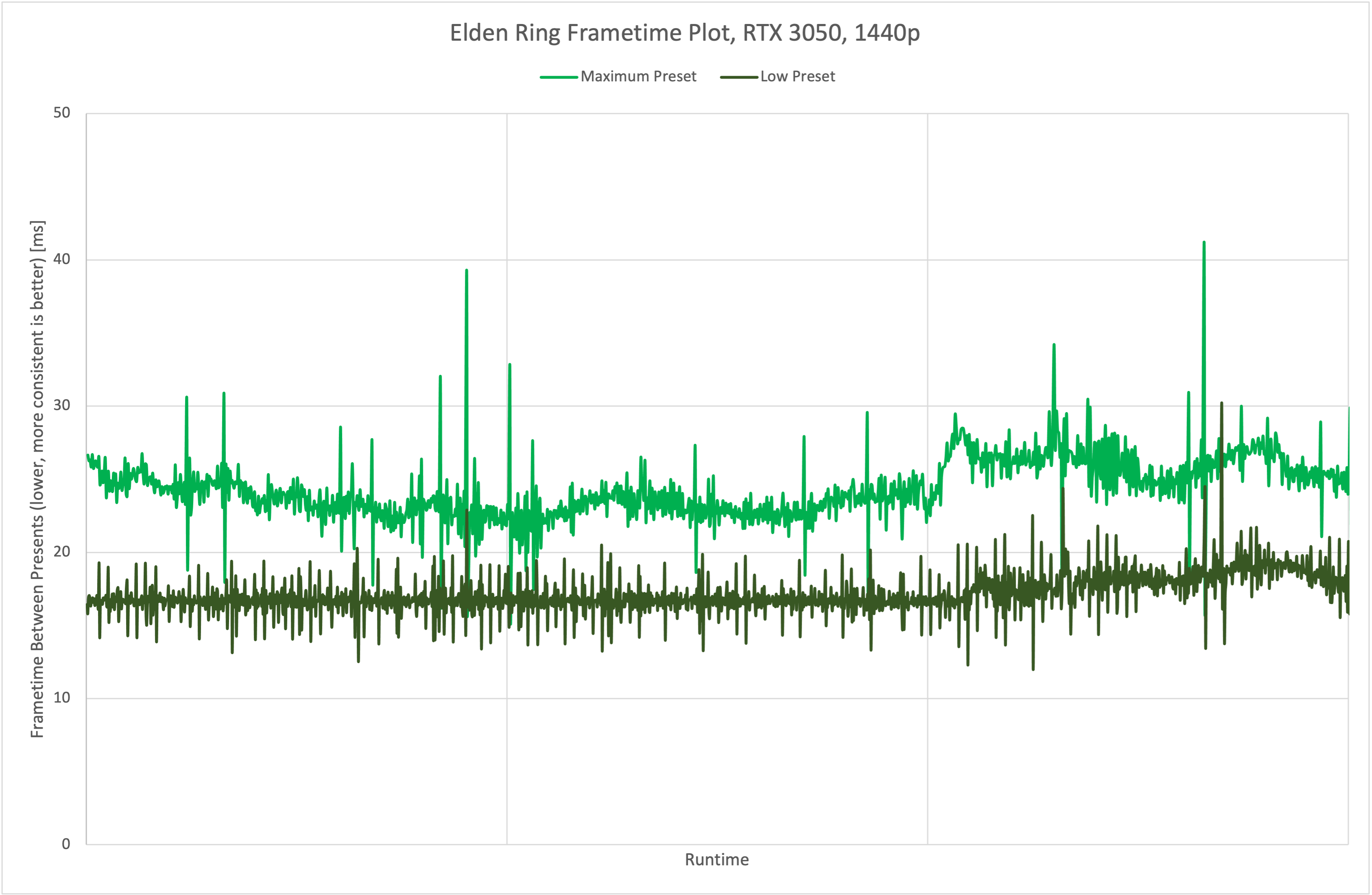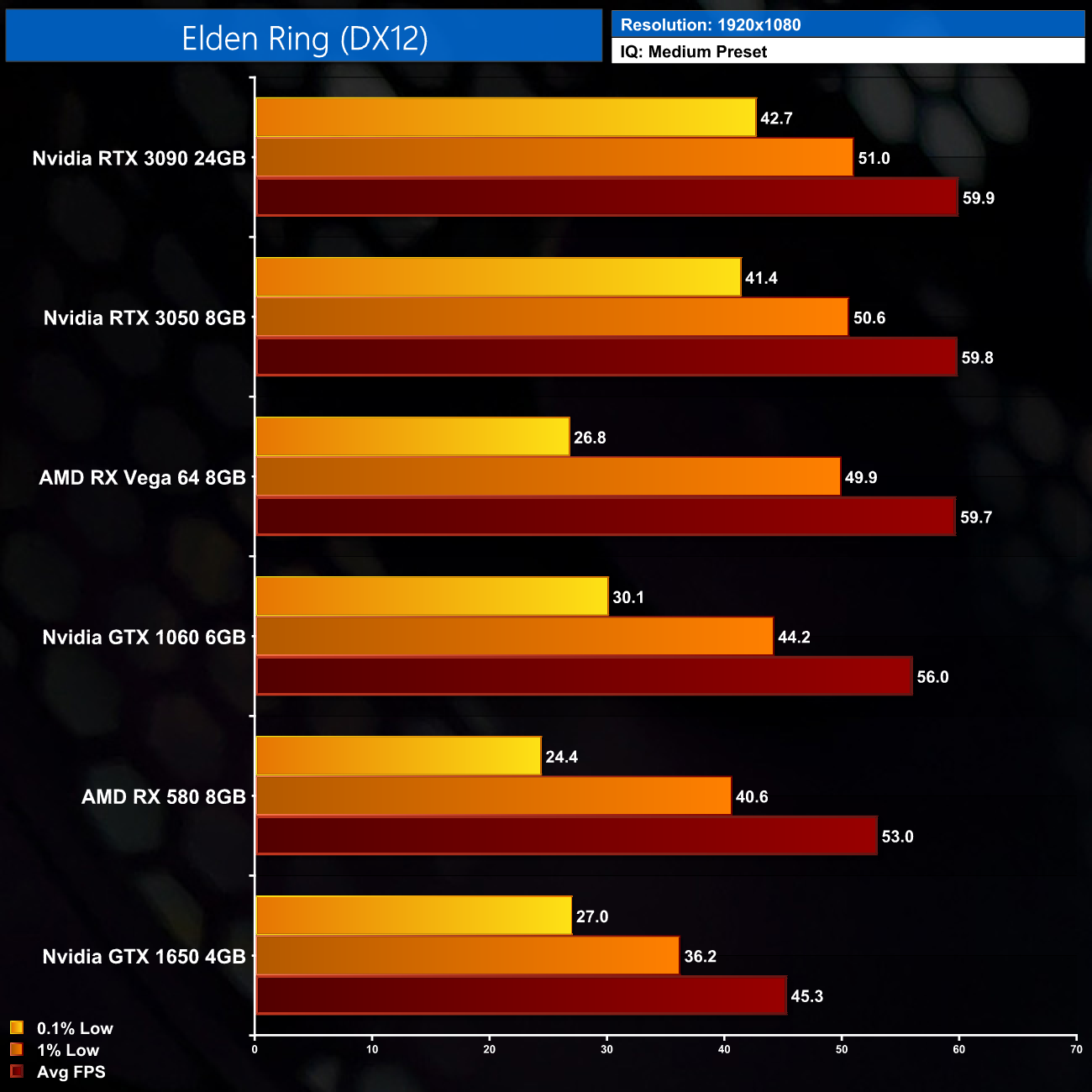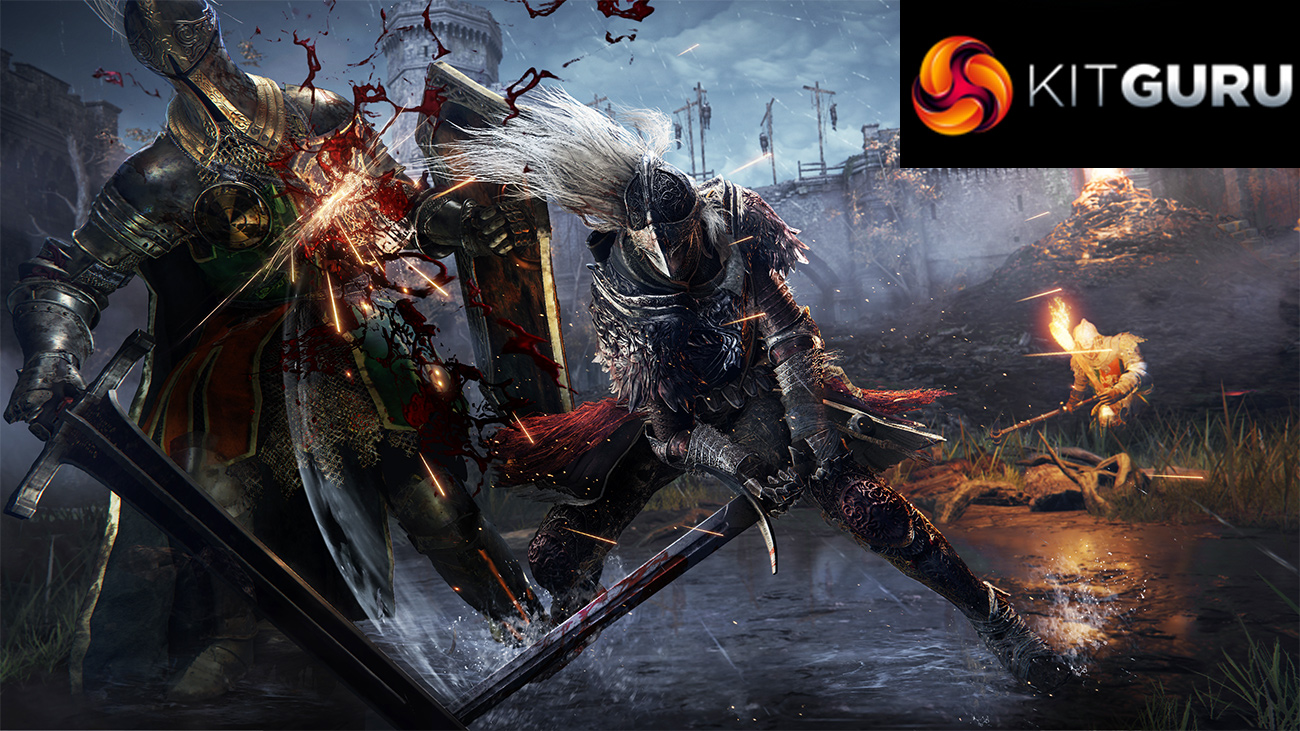Elden Ring was released last Friday and is already hugely popular, with a peak concurrent player-count of almost 900,000 on Steam. But are reports of terrible PC performance accurate? That's what we find out today, with a detailed look at the game's behaviour on PC, while also testing more than ten different GPUs in this game…
For Elden Ring on PC, we’ll start with a quick look over the settings menu, with the main video options letting you choose resolution and one of four quick presets. There is an advanced settings menu, however, with a good amount of tweakable options here, so hopefully that will bode well for performance scaling, but we will get to that below. Today we’re focusing on the Maximum preset and seeing how that performs across a range of GPUs, but we do also check out a few cards running the Medium preset as well.
For our benchmark pass, I tested in the Gatefront Ruins area of the game, just after the player first gets to ride the Spectral Steed named Torrent. There’s a bunch of enemies who pop on screen here and you move at quite a pace on your horse, so I found it a fairly demanding but highly repeatable area to test, based on the first hour or two that I played.
Test System:
We test using the a custom built system powered by MSI, based on Intel’s Alder Lake platform. You can read more about this system HERE and check out MSI on the CCL webstore HERE.
| CPU |
Intel Core i9-12900K
|
| Motherboard |
MSI MEG Z690 Unify
|
| Memory |
32GB (2x16GB) ADATA XPG Lancer DDR5 6000MHz
CL 40-40-40
|
| Graphics Card |
Varies
|
| SSD |
2TB MSI Spatium M480
|
| Chassis | MSI MPG Velox 100P Airflow |
| CPU Cooler |
MSI MEG CoreLiquid S360
|
| Power Supply |
Corsair 1200W HX Series Modular 80 Plus Platinum
|
| Operating System |
Windows 11 Pro 21H2
|
| Monitor |
MSI Optix MPG321UR-QD
|
| Resizable BAR |
Enabled for all supported GPUs
|
Driver Notes
- AMD GPUs were benchmarked with the 22.2.2 driver.
- Nvidia GPUs were benchmarked with the 511.79 driver.
1080p Maximum Preset Benchmarks
So, if we kick off our with our 1080p testing using the Maximum preset, the first thing you will notice is I’ve only tested 11 GPUs, when usually I like to include about 30 graphics cards, give or take, to really cover a wide range of hardware. The reason for this is two-fold – first of all, Elden Ring has a 60FPS cap, and anything faster than a Vega 64 will be coming up against that cap at 1080p. The second reason is that, no matter what GPU you have, stuttering is very present in this game, which is why I felt it necessary to add in the 0.1% low data, as even the 1% lows don’t tell the whole story here.
Click to enlarge.
In fact, to get a complete picture of what’s going on, we need to look at a frametime plot. In a game with a 60FPS cap, testing with an RTX 3090 at 1080p, we would expect a rock-solid 60FPS experience, which would equate to each frame being rendered in 16.7 milliseconds. A perfect 60FPS with perfect frame pacing should result in a completely straight line on the frametime plot – but that is clearly not what we get. Multiple stutters are visible here, with frametimes exceeding 20ms on numerous occasions, and spikes over 25ms are also observed three times. In game, that sort of frametime inconsistency is visible as a stutter, which I noticed during general open world traversal and when fighting enemies. It’s these spikes which contribute to the very erratic 0.1% low numbers we see on the chart, as there is just no consistency in terms of frame delivery
Click to enlarge.
Of course, some GPUs won’t be able to hit 60FPS at Maximum settings, so for older or slower cards, we’d expect frametimes above (or longer than) 16.7ms, but even then a smooth experience should be possible with consistent frame delivery, which we just aren’t seeing from either the GTX 1060 or RX 580 in Elden Ring, with both cards still exhibiting clear spikes to the frametimes, resulting in a stuttery feel.
This is a perfect illustration as to why it’s so important to look at more than just average frame rates when benchmarking. Performance actually looks pretty decent, with most cards we tested able to hit 60FPS at Maximum settings, if only looking at the average frame rates – but that only tells a very incomplete story about real-world performance.
1440p Maximum Preset Benchmarks
Stepping up to 1440p, not a whole lot has changed. The 60FPS cap prevents us seeing scaling beyond that figure, but the stuttering is a fundamental issue of the game, so even GPUs that are hitting the 60FPS ceiling in terms of average frame rates, still exhibit frametime issues.
Click to enlarge.
We’ll show another example of this – this time looking at the RTX 2080 Ti and RX 6800 XT. Both cards can average 60FPS at 1440p using Maximum settings, but both GPUs also showcase the very poor frametimes that are inherent to Elden Ring, with clear spikes and general inconsistency.
As a general note as well, frametimes do tend to be slightly worse on AMD GPUs across the board, but you will notice stutters on any GPU so it's hardly a point worth emphasising – the stuttering is a fundamental issue with the game, rather than what graphics card you own.
2160p (4K) Maximum Preset Benchmarks
We did also test a handful of GPUs at 4K, but even with the 60FPS cap, only the RTX 3090 was really able to hit that ceiling, though the RX 6800 XT did come close.
Click to enlarge.
Even then however, as you have probably got the picture by now, there are still frametime issues at play, with the with the frametime chart once again looking very inconsistent for both of those GPUs.
Preset Scaling
Moving on though, I do want to take a quick look at preset scaling in this game. As mentioned, there are four graphics presets to choose from, so we tested all of them on an RTX 3050 at 1440p, ensuring we stay below the 60FPS cap to see what performance gains are on offer when lowering the settings.
In short, scaling isn’t wonderful, though it isn’t non-existent either. Dropping from the Maximum preset to High, for instance, boosts performance by 14%, while we see a further 10% improvement to the average frame rate when using the Medium preset. From there, the Low preset nets another 14% boost.
Click to enlarge.
Just to clarify as well, simply switching over to Low settings won’t fix stuttering, as evidenced by this frametime plot. Yes, the frametimes are generally lower when using the Low preset because the frame rate has increased, but there is still a very clear lack of consistency with the frame delivery.
1080p Medium Preset Benchmarks
As one final piece of evidence to prove that, I tested a handful of cards at 1080p using Medium settings. We can see that performance of the RTX 3050 and RTX 3090 is pretty much identical here as both easily hit the 60FPS cap, but still show 0.1% lows lagging behind. The fact that even the RTX 3090 can’t deliver a locked 60FPS experience at 1080p Medium settings should be all the proof you need that Elden Ring has serious problems, and it’s not about the GPU you are using, but it’s down to the game itself.
Closing Thoughts
So then, that is it for the performance data in this video, and as we have clearly shown, there is major work to be done. Even putting the serious performance issues to one side, there are a few other areas I am not too happy with in Elden Ring that I noticed during my play-through, and please do check out the video above for a visual analysis of these points.
The first of these issues is the pretty obvious texture pop-in. I noticed this most when riding fast on horseback through new areas of the game, with grass and shadows visibly popping into their higher quality assets as you ride by, but it is also visible when on foot, too. For me it is quite distracting so I’d like to see further work to help reduce the starkness of the transitions.
I’m not sold on the anti-aliasing used in Elden Ring either. To my eye there is just a lot of visible shimmering going on, noticeable on both distant foliage and your characters hair in the foreground, to give just two examples. This gets even worse at Medium settings, where the game just looks incredibly fuzzy. I believe this could be an area that DLSS would improve on big time, but of course that is missing from the game as well.
Lastly, shadow maps also appear broken when using on Medium or Low settings, they constantly flicker and look very janky, so again, this is just another thing for From Software to improve.
All told, I am very disappointed with Elden Ring on PC right now so I am definitely going to wait for another patch or two to land before playing any further. If you’ve been playing it this past weekend though, do let us know how you have been finding it in the comments below.
Discuss on our Facebook page HERE.
KitGuru says: Would you be interested in a follow-up article once Elden Ring's issues have been fixed? We'd love to see native support for frame rates over 60FPS, as well as ultrawide monitors, too.
 KitGuru KitGuru.net – Tech News | Hardware News | Hardware Reviews | IOS | Mobile | Gaming | Graphics Cards
KitGuru KitGuru.net – Tech News | Hardware News | Hardware Reviews | IOS | Mobile | Gaming | Graphics Cards


